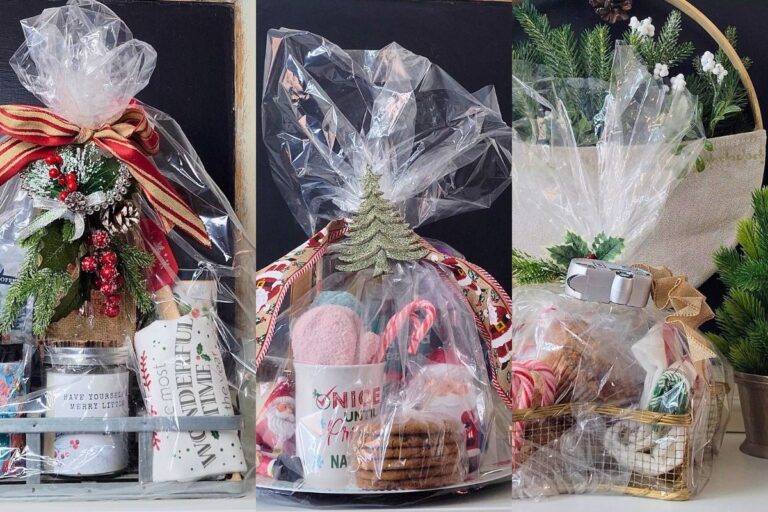Historical Christmas Decorations VS Today’s
Decorating for Christmas is a tradition that many of us look forward to each year, But how did certain historical Christmas decorations come to be? Today let’s explore the stories behind 24 of our favourite holiday decor pieces.
Taking a Look at Historical Christmas Decorations
NOTE: I wasn’t around when any of these traditions started so my information is definitely second hand. Because of this, some of my “facts’ may be wrong. My bad. Feel free to correct me below.
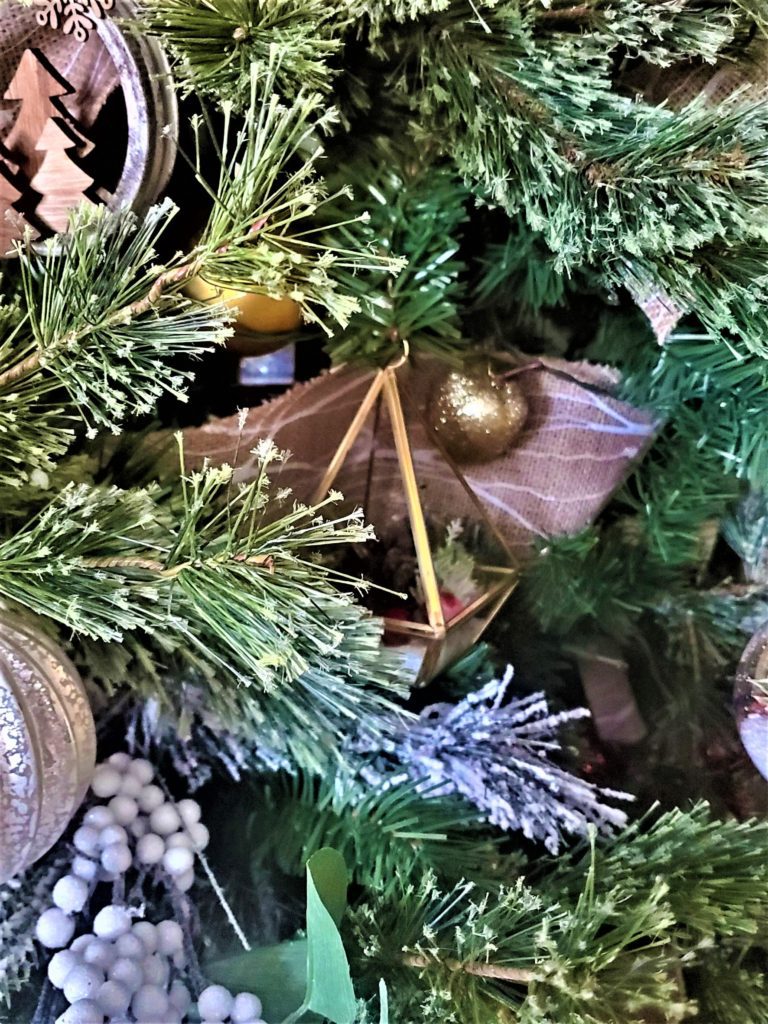

Historical Christmas Decorations #1: Christmas Tree
La piece de resistance – the Christmas tree.
In all of it’s glory the Christmas tree is unarguably the star of the show. A home just doesn’t feel like the holidays without one. Today we decorate with real or faux. They come flocked. feathered, coloured, and pre lit. Some homes have one while others have one in every room. Whether you are a traditionalist, a lover of coloured or plain white lights, or someone who decorates their tree with a new theme each year, decorating the Christmas tree and gathering around to bask in it’s glow is often the highlight of the season.
The practice of bringing the outdoors – indoors predates Christianity. Ancient Egyptians would decorate for the winter solstice by hanging palm leaves around their windows and doors. Romans decorated their temples and homes with evergreen boughs to encourage a plentiful harvest during the solstice. And pagans used evergreen boughs to decorate homes during the long winter months so that the interior would be less depressing.
But credit for the actual Christmas tree goes to the Germans. More specifically, a priest by the name of Martin Luther. Imagine 16th century Germany. It’s December 24th, the religious feast of Adam and Eve, and in walks Dad with a paradise tree. Why? Because during this time Germans started decorating these paradise tress with apples, nuts, and wafers. The very fist Christmas tree.
However, it is said that it was Queen Victoria who got everyone super stoked about the annual Christmas tree tradition. Apparently the grand dame did it up well and everyone wanted a piece of that action and we have just never stopped.
#2: Christmas Tree Topper / Finial D’Arbre
They say that the Christmas tree topper makes the tree. I don’t know who they are but they are right.
The original tree topper was baby Jesus but I guess having baby Jesus precariously propped on the top of a tall tree eventually became too much for mother’s hearts and this ideas was replaced with using an angel or star instead
Now a days, we decor enthusiasts have a ton of Christmas trees topper options. Top your Christmas tree off with angels, stars, bows, snowflakes, snowmen, giant bows, giant gnomes, finials or Santa Claus. Oh my!
And who do we have to thank for this popular holiday decor staple? Queen Victoria again. So, thanks ol’ girl.
FUN FACTOID: Finial d’arbre is French for tree topper but it sounds so much more romantic. I personally can never go with the English version. Nope, can’t do it.
Historical Christmas Decorations #3: Christmas Tree Lights
Ok, this decorating staple started out with a super crazy idea. The original Christmas lights were lit candles. Yep, actual candles attached with wire and then lit. We are talking flames in a dried out tree. What could possible go wrong?
Once again, it all started in Germany sometime in the 16th or 17th century. A wide margin, I know. There is conflicting information on this so I included both dates. Eventually the practice spread to other parts of Eastern Europe and soon everyone was doing it.
This insanity went on for another 200 years. Eventually, after much death and carnage candles were replaced with electric Christmas tree lights in 1882. The brilliant invention was created by a good old buddy of Thomas Edison’s, Edward H. Johnson.
Unfortunately, this latest option for tree lighting wasn’t a ton safer than the candle option, and although lights and safety have improved immensely, Christmas tree fires continue to be a thing. Almost makes you wonder why we do it? But it’s so pretty.
FUN FACTOID: Wanting to delve deeper into the meaning of Christmas lights? Depending on your belief system, they can represent God’s light, the star of Bethlehem, personal enlightenment, the need for light in darkness, or the glow of family love.
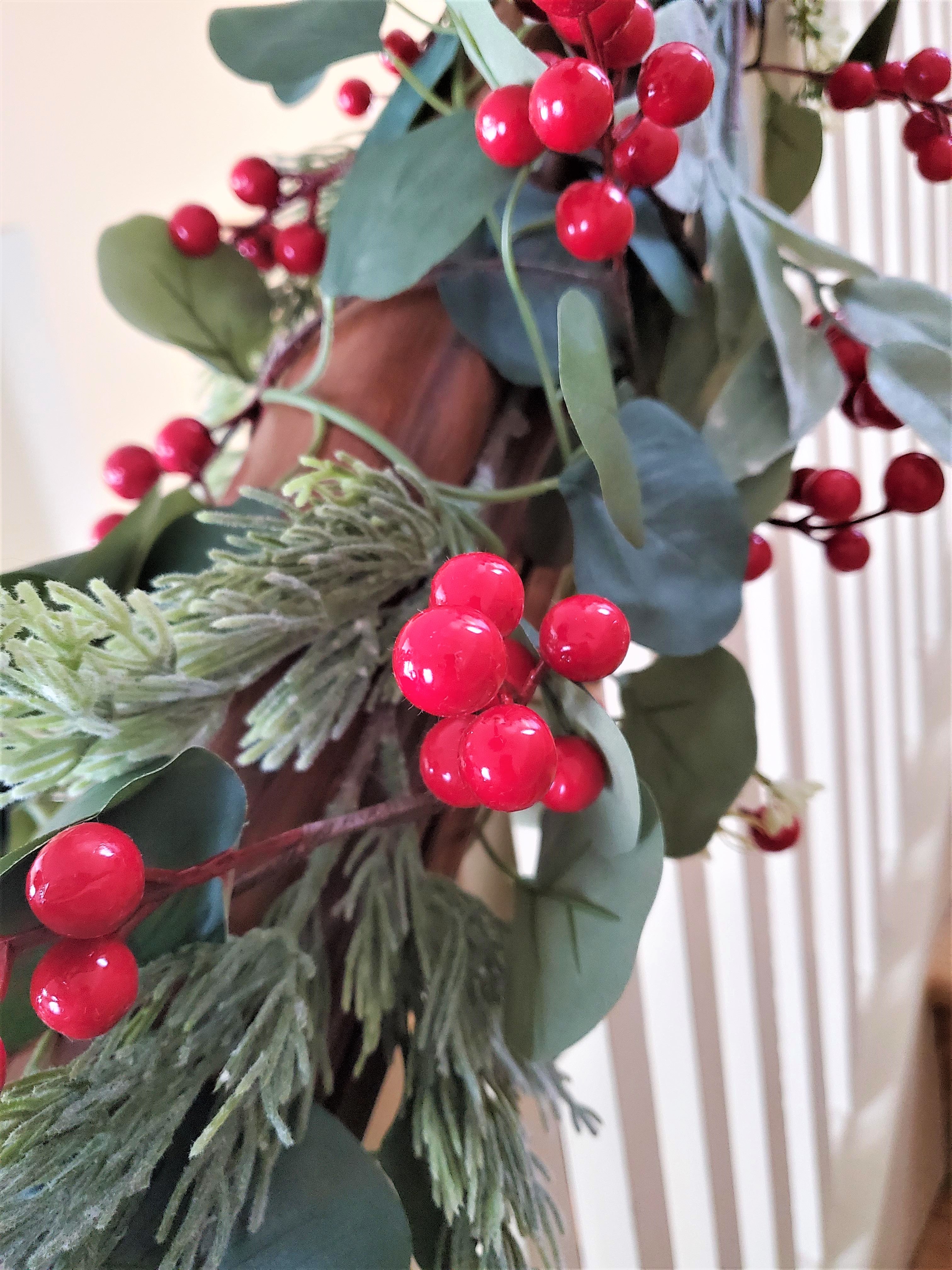

#4: Christmas Tree Skirt
Today we use tree skirts to beautify and hide ugly tree stands. They also elevate the look and provide a bit of cushion for falling, breakable ornaments. It’s really nothing more than an amusing folly but it looks spectacular so we willingly spend enormousness amount of cash just to own one.
But back in the late 1800’s the reason behind inventing the Christmas tree skirt was a bit more practical. You see, an additional problem with lighting candles and attaching them to your Christmas tree was that the wax would drip and damage the floor. The Christmas tree skirt would catch the wax.
Most boring Christmas story ever!
#5: Garland
Today we turn to garland to add texture to our faux Christmas trees, for additional interest on our stairwells and fireplace mantles, or cover up those pesky bare spots that come with using a real Christmas tree. But where did this all start, you ask.
As mentioned above, the practice of bringing greenery into the home during the winter months predates Christianity. In fact, many pagan winter traditions were modified, given new meanings, and then incorporated into present day Christmas traditions. Garland just happens to be one.
And I for one, am happy that this a tradition has stood the test of time. The winter months can be long and hard. There is just something incredibly calming about tastefully smothering our homes in greenery, pine cones, berries and that intoxicating scent of fresh pine.
More Historical Christmas Decorations
#6: Front Door Wreath
Wreaths became a huge deal about 10 years ago. Some, including me, would argue that they are an option all year long. But for many, a wreath hanging on the front door can mean only one thing… Christmas time!
This tradition of hanging a wreath on the front door is to welcome in the spirit of Christmas. The circular shape mimics that of the crown of thorns placed on Jesus’ head before his crucifixion. While the mix of evergreen and the circle shape represent eternal life.
Today you can find front door Christmas wreaths in countless styles, and made with a wide range of materials. You can go with the traditional faux or real greenery. You can add an almost limitless array of embellishments or opt for more modern materials such as grape vine, yarn, metal, wood, feathers, or burlap. Want a star shaped wreath? That’s possible now. So are wreaths in the shape of sleighs, stockings, candy canes, snow men, or even Santa’s head.
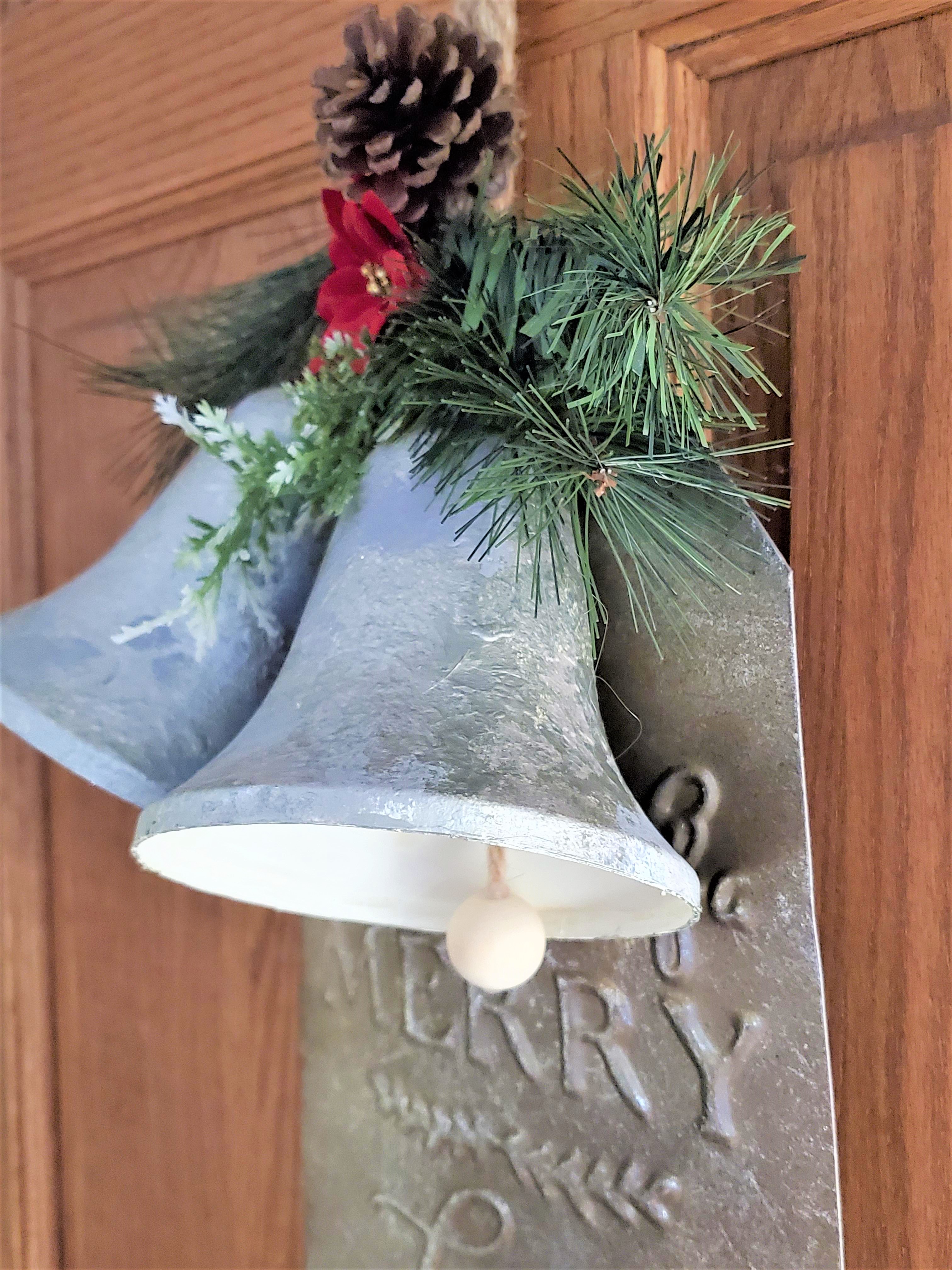

#7: Candles
Candles are awesome all year long but there is just something extra special about candle light during Christmas time.
There is something particularly magical about a lit candle placed on a frosted window sill. The tradition started when British priest made it illegal for Irish Catholics to practice Catholicism. Forced to hide their faith, devout Catholics would place a lit candle in their windows to signal to their priest that it was safe to come in.
Now we use candles to create ambience. Roaring fires, candles clustered together, lit lanterns, and glowing centerpieces have become an expected Christmas time decor addition.
#8: Bells
Ah, the sweet sound of the Christmas bell. We like bells so much during the holidays that we now use them in every form imaginable in our decor. The bells don’t even have to ring. But the reason why we associate bells with Christmas has evolved over time.
Apparently, it started with the pagans traditions again. They had this interesting theory that the ringing of a bell would ward off evil spirits. Later, hand bells would be used to announce the beginning of significant events, important news, and the start of church.
See where I’m going with this?
Eventually hand bells were used to announce the arrival of the holiday season and to declare the birth of Christ.
Later, jingle bells were added to the bell decor category. During the snowy months, sleighs were used to get around. This was how one would get from house to house during the Christmas season. The problem was the days were short during the cold months of winter and snow storms could obscure a driver’s view. As a safety measure, sleigh bells would be attached to the harnesses of the horses. That way others would hear the sleigh coming even if they couldn’t see it.
Plus, bells are cheap. They’ve always been relatively cheap so they make for ideal and accessible holiday decor.
#9: Lanterns
We have the Philippines to thank for this fabulous decoration item. In the Philippines, during Christmas, lanterns called parols light up the streets and storefronts. These 3D, star-shaped, paper lanterns are meant to represent the star of Bethlehem and their beauty is truly astounding.
Nostalgia is another reason why lanterns have become so popular during the holiday season Luminaries were once used to guide people to midnight mass and they conjure up images of Dickens and Christmas laden cobble stone streets.
#10: Christmas Colours
Ever wonder why when we think of Christmas we automatically conjure up thoughts of red, white, and green? Sure, these aren’t the only colours used to decorate a modern day Christmas home but they are the ones most associated with Christmas time. Why?
RED: There are a couple of really good reasons for red being a Christmas colour. First, it is representative of the red apples that once hung on the original holiday paradise tree. Red also represents the blood of Jesus on the cross.
GREEN: Is for the evergreen boughs that represent the eternal life of Jesus.
WHITE: Represents the hosts that once hung on the original Christmas trees and that are given out at mass. White is also often associated with purity, innocence, and peace. All sentiments prominent during the Christmas season. And then of course, there is snow. Snow is white. And we all want snow at Christmas.


#11: Snowman
Rumour has it that no one knows who actually invented the first snowman but it was likely sometime in medieval times. It is believed that these snowmen were thought to scare away evil spirits.
Now we decorate with them because we think they are cute and fun. Thankfully, for us it conjures up images of Frosty, Olaf, and the like.
#12: Candy Canes
Legend tells a tale of a choir master in 1670 Germany who decided that his young choir singers would benefit from some sugary candy stick bribery. Think of it as a sweet way to keep the munchkins quiet during the ceremony. For added measure, this creative dude bent the candy sticks into shepherd’s hooks and a sweet new Christmas tradition was born.
FUN FACTOID: Some say the the shape of the candy cane was less about a shepherd’s hook and more about it being in the shape of a J for Jesus.
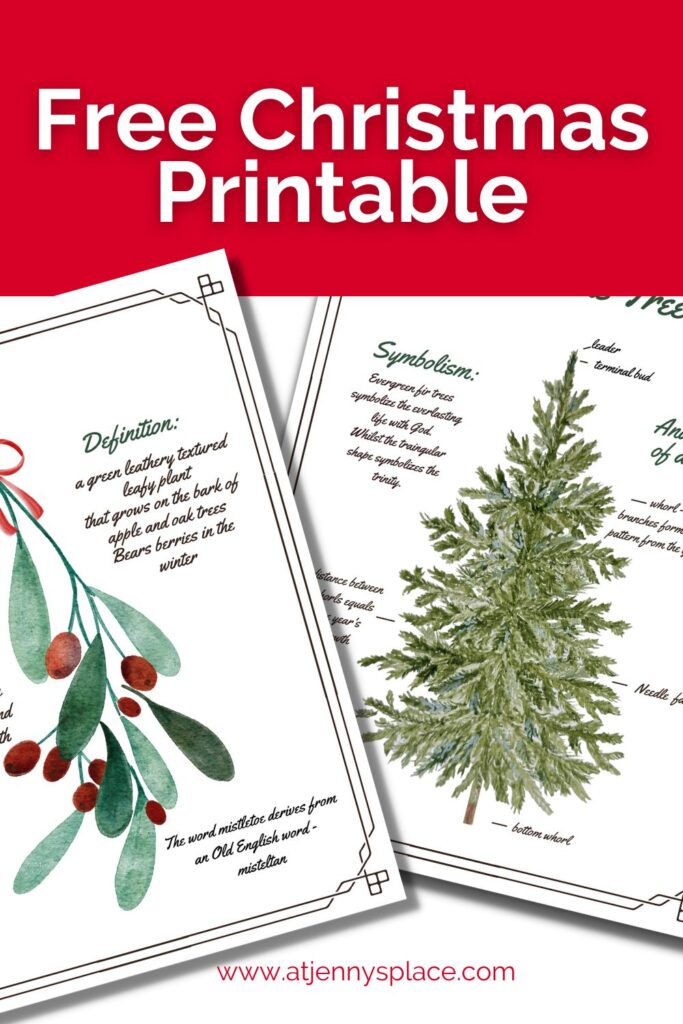

Christmas Art Printable!
Inspired by Kirkland Christmas, this holiday wall art is the perfect addition to any Christmas decor. Hang on the wall or display on your fireplace mantle.
Simply download the free printable, print and frame.
Even More Historical Christmas Decorations #13: Ribbon
Who doesn’t love Christmas ribbon? I mean. it’s awesome and it has so many uses. Ribbon is perfect for decorating Christmas trees, wreaths, on the backs of dining room chairs, as exterior decor and as embellishments on wrapped gifts.
Three wise men each once brought gifts to baby Jesus and that tradition continues to this day. Bonus: the ribbon tied around gifts signifies how people are tied together in goodwill during the Christmas season.
#14: Stockings
Legend claims that it was St Nicholas himself who started the stocking fad.
The story goes that a father lost his wife and was left with three young daughters and no money. Lacking a dowry for marriage, the poor father despaired that his daughters would never wed and therefore were destined to lead a life of poverty.
Hearing this tale of woe St Nicholas tossed three bags of gold through the father’s window each landing in a stocking hanging by the fire place. When the family awoke they found the bags of gold and rejoiced. Guessing the daughters got hitched.
So thank you St. Nicholas! Because of you we get to beautify our fire place mantels with glorious stockings and then fill them with even more glorious and thoughtful gifts.


#15: Gingerbread Men / House
The evolution of gingerbread decor has basically been a world wide effort.
Modern day Christmas decorators use gingerbread men and houses to decorate their holiday trees, as home decor pieces, in fabrics, as decor for hot chocolate stations, or as snuggly little stuffies.
Gingerbread recipes have been around since 2400 BC. The first known recipe being from Greece but ancient China and several Middle European countries also have their own version of old school gingerbread. However, they were not sweet and delicious like we know ginger bread to be today.
And the award for the inventing gingerbread men goes to Queen Elizabeth I. The sassy dame wanted her chef to create ginger bread cookies to resemble each of her visiting dignitaries. She figured it would impress them and boy did it ever! Because of this we have been baking, decorating, and chowing down on gingerbread men ever since.
Germany gets credit for the gingerbread house. These stunning, and well decorated cookie homes came into existence in the 1700s and thanks to Christmas and Brothers Grimm their popularity has yet to fade.
#16: Stars
This one is easy.
One evening, a long, long time ago three wise men followed a star. This star led them to the birth of Jesus Christ. We call this the star of Bethlehem. And so now we use stars to decorate our holiday homes.
Few More Historical Christmas Decorations #17: Angel
Who doesn’t love a delicate angle for Christmas?
In the Christmas story the angel Gabriel informs the Virgin Mary that Mary would be having the son of God. So, big role. Because of this significant role the angels are often used as a Christmas tree topper in order to remind us all of the birth of Christ.
Angles are also a physical reminder of those that we have lost. During the holidays we tend to think a lot about our loved ones and those that are no longer with us. Angels help us to remember these people. Plus, they just look so darn pretty.
#18: Ornaments
And the award for inventing modern day, glass Christmas tree ornaments once again goes to…..Germany!
In the 1800s, Hans Greiner (look at me name dropping) created beautiful glass ball ornaments. Ideal for decorating Christmas trees, these glass baubles were a hit.
Originally Christian homes, decorated their trees with religious ornaments but these days you can find ornaments in almost any shape or size. I once saw a ornament that resembled the Tiger King. I mean, sheesh.
FUN FACTOID: The reason why many of our Christmas tree ornaments are round is because the shape represents the apples that once hung on German Christmas trees.


#19: Advent Calendars
In the 1800’s families all around Germany started marking the days leading up to Christmas. They would start 4 weeks before the 25th and mark each day of Advent with chalk. Thereby, creating the world’s fist advent calendars.
Later, devout Christians would mark the days with lit candles and this eventually led to using small gifts or delicious chocolates. Now you can get just about anything in advent calendar form. Some are into theme advent calendars filled with cheeses, mini wine or spirit bottles, or makeup. I’ve even come across advent calendars for dogs.
Whether you like simple DIY number count down advents, old school mini toys or chocolate calendars, or the modern themed approach there is definitely the perfect calendar count down for you.
Historical Christmas Decorations… Almost Done #20: Reindeer / Deer Heads
Many Christmas traditions have roots in pagan traditions and this one is no exception. Apparently, pagans had the hots for reindeer. And let’s face it, it’s easy to see why. They are so incredibly majestic.
Reindeer represent safe travels and endurance. Two attributes that made them perfect for the role of Santa’s faithful chauffeurs. Add a reindeer with a bright red nose and you have a decor options that are sure to stand the test of time.
Some of us like to go all out with our reindeer decor. Some prefer their reindeer to be cute and cartoonish. Others prefer a more sleek, silhouette look. Antlers in centerpieces, as wall decor, or as a print on fabrics and wrapping paper have become all the rage. I made gorgeous throw pillow cover using felt reindeer heads. They turned out amazingly well.
#21: Holly
As we already know greenery being brought into the home for the winter solstice was a common practice and we have the ancient Celtic people to thank for our love of holiday holly. Attracted to its longevity and bright red and green appearance , the Celtics believed that the holly was created so that humans could have a little bit of beauty during winter.
Christians equate the red of berries to the blood of Christ and the prickly leaves represent the crown of thorns worn on Jesus’ head at his crucifixion.
Their bright, Christmassy colours and elegant appearance make them a long lasting, holiday favourite.
#22: Sleighs
The original tales of Father Christmas mention that he rode around on a donkey. Then sometime in the 19th century a brilliant writer decided to write a fabulous story titled The Night Before Christmas. Moore decided that the idea of Santa on a donkey wasn’t romantic enough so instead he gave the big guy a splendid red and gold flying sleigh.
And thank goodness he did! I don’t know about you but I do not relish the idea of decorating my holiday home with donkeys. One in the creche and that’s enough for me. But a sleigh, now that offers dozens of beautiful and classy decorating options.
TRANSLATION: Creche is French for Nativity.
FUN FACT: The original title for The Night Before Christmas was actually The Visit of Saint Nicolas. Did you know that? It’s my favourite Christmas story and I can honestly say I had no idea. Feeling smarter already.


#23: Elves
Elves are found in numerous European folktales. These adorable and magical creatures were thought to do both good and evil acts. It was believed that elves would provide help and fortune to those they deemed good. However, if they thought someone was bad they would play tricks and punish the person.
Earlier Christians believed elves were demons. They rejected their supposed magical powers and feared them. Then came the book The Night Before Christmas. Yep, that’s right. This story again. The delightful book didn’t just bringing us Santa’s sleigh and the team of flying reindeer it also introduced us to the concept of Santa being a “jolly old elf.”
The concept stuck and soon Santa found himself in a workshop filled to the brim with little elf helpers. Now we know that there is no way that poor Santa could do everything needed for Christmas day by himself. And so we give thanks to his little helpers by including them in our holiday decor and festivities.
Final Historical Christmas Decorations #24: Santa Clause
The big Kahuna, himself. Santa Claus, Saint Nicholas, Kris Kringle, Father Christmas or just Santa. No matter what you choose to call him no one can dispute that Santa and Christmas goes together like peanut butter and jelly.
The tale of Saint Nicholas dates back to the 3rd century when a monk named Nicholas became the patron saint of children. Known for his kindness especially to the young, Saint Nicholas was a natural fit for tales of a kind, and generous man who gave goodwill and gifts during the holiday season.
By the 1700s Saint Nicholas had become synonyms with Christmas. The original St Nick was replaced with a fat, jolly, red faced elf that dressed himself head to toe in red velvet and white fur. This magical being gave out gifts to good little boys and girls on Christmas morning. He also became a staple in holiday decorating.
Today, you can find millions of decorative items that don this jolly elf. Basically, if you can think it. you can find it. Santa is everywhere. You can find the nostalgic look of a man dressed in bright red, with a full white beard, and a sack full of gifts. There are Santa’s that dance and some in their underwear. Or if you are into a more classic and natural look, you can find Santa’s in earth tones, in all white, or looking more woodsman like.
Jenny’s Finishing Thoughts On Historical Christmas Decorations
Every year we decorate our homes for Christmas. We put up our tree and adorn it with carefully selected and sentimental ornaments. Then we hang a wreath on the front door and stocking over the fireplace. We gravitate towards decor pieces laden with Santa, elves, sleigh, and antlers. But we seldom stop to wonder why. I think though knowing where our traditions come from and why we are generationally attracted to them enriches the experience.
Which one of these historical Christmas decorations facts surprised you?
Merry Christmas!
xx Jennys
Did you find this post helpful or inspirational? Save This Pin to your Christmas Tree Decor board on Pinterest!
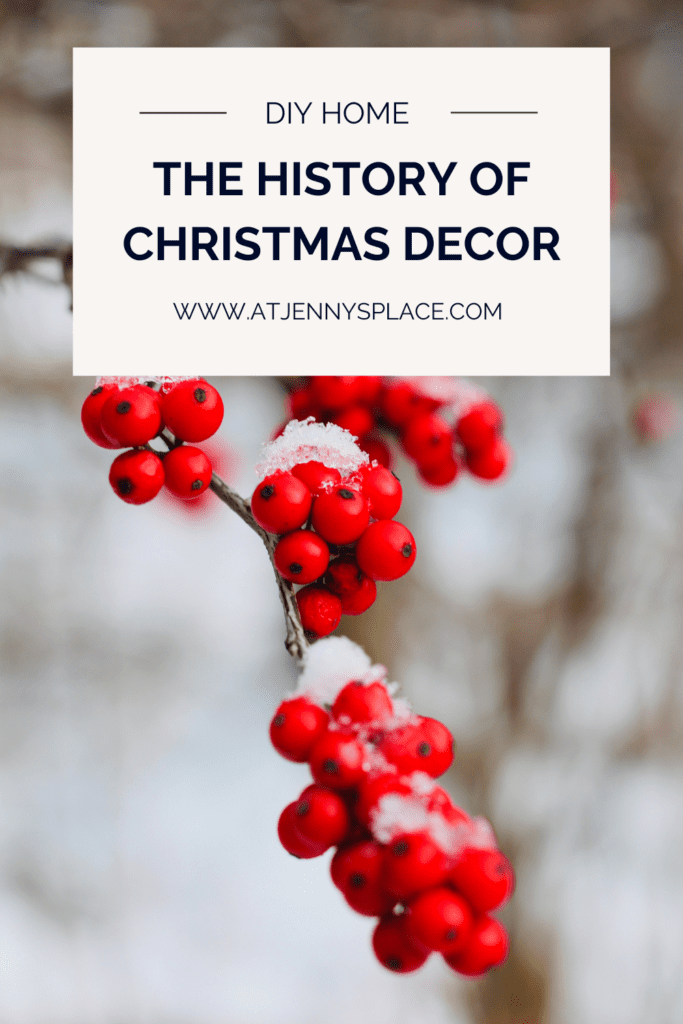

If you liked this post you may also enjoy:
Step By Step Instructions On How To Decorate A Christmas Tree Perfectly and Easily
7 Sensational Xmas Decorations Using Recycled Materials
25 Unexpected Dollar Tree Craft Supplies For A DIY Christmas




